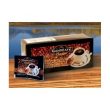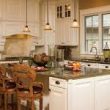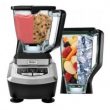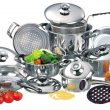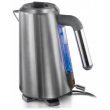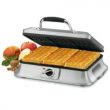The idea of using a special cup just to drink tea may be a little strange to a coffee fanatic but the tradition of having special cups to enjoy tea in are as old as the tea itself. Contemporary tea cups tend to be small, with a little handle that is held with the thumb and one or two fingers. It is often ceramic and comes with a matching saucer to be part of a tea set with a teapot, cream jug, a covered sugar bowl and a slop bowl.
Tea culture
The origins of a tea set and tea cups comes from the tea ceremonies that were part of life in various parts of the world, most particularly in China, Japan and Korea. They are also the root of tea parties and were spread around by the British Empire to far-flung places such as Australia, Pakistan and Kenya.
Tea is extremely important to Chinese society and culture and there are tea houses in most neighbourhoods and business districts. There are dozens of different hot and cold tea drinks that are offered in these places along with tea-related snacks. They are used typically late in the afternoon when students and business people arrive or later in the night for those who prefer to out at night.
Formal tea houses produce a better quality of beverage and snacks and often use Japanese as well as Chinese tea leaves. There are also tea vendors who specialise in selling leaves and pots as well as other tea related items.
Japanese Tea
In Japan, it is green tea that is the traditional drink used in tea ceremonies on special occasions or when receiving special guests. Business often serve green tea to employees on an afternoon and provide sweets that are designed to accompany the drink. When a family or school outing takes place, a thermos of green tea is normally taken along with the correct tea cups.
The traditional tea ceremony is called the Way of Tea and uses equipment called chadogu. There are many different types and styles but all have the same basic components:
- Chakin – this is a small rectangular white cloth made from linen or hemp to wipe the tea bowl
- Tea bowl – different types of tea require different bowls, as do the different seasons. For example, a shallow bowl is used in summer to allow tea to cool quickly while a deeper one is used in winter. There are bowls still in use today that are over 400 years old
- Tea caddy – this is a small container with a lid where the powdered tea is kept
- Tea scoop – this is a single piece of bamboo, occasionally ivory or wood, that is used to scoop the tea from the caddy to the bowl
- Tea whisk – used to mix the powdered tea with hot water, they are often carved from a single piece of bamboo and tend to be replaced quite often as are fragile
History of the tea cup
The tea cup in its modern form is believed to have been invented by the French in the 17th century to replace the wooden cups originally used. When they were first made, the cups were so expensive that only the wealthiest could afford them and continued to be the case until mass production took over in the 1920s. Brands such as Royal Worcester china were renowned for the production of tea cups and other bone china items.
These traditional tea cups are now highly collectible items with intricate designs on them and accompanied by a matching saucer. They are often unique even if several of the same design were produced as they were decorated by hand. Commemorative cups were also often made with countries, states, flowers, events and even Presidents on them.
Modern tea cups
Modern tea cups would still be recognisable to the tea drinks of generations past. Some are still delicate china cups with matching saucers and a range of different patterns. Alongside this are the glass cups and plain, simple china cups that retain the traditional shape but allow for a modern or minimalist look to the china cabinet. But no matter how you enjoy your tea, there is still a perfect tea cup available for it.

